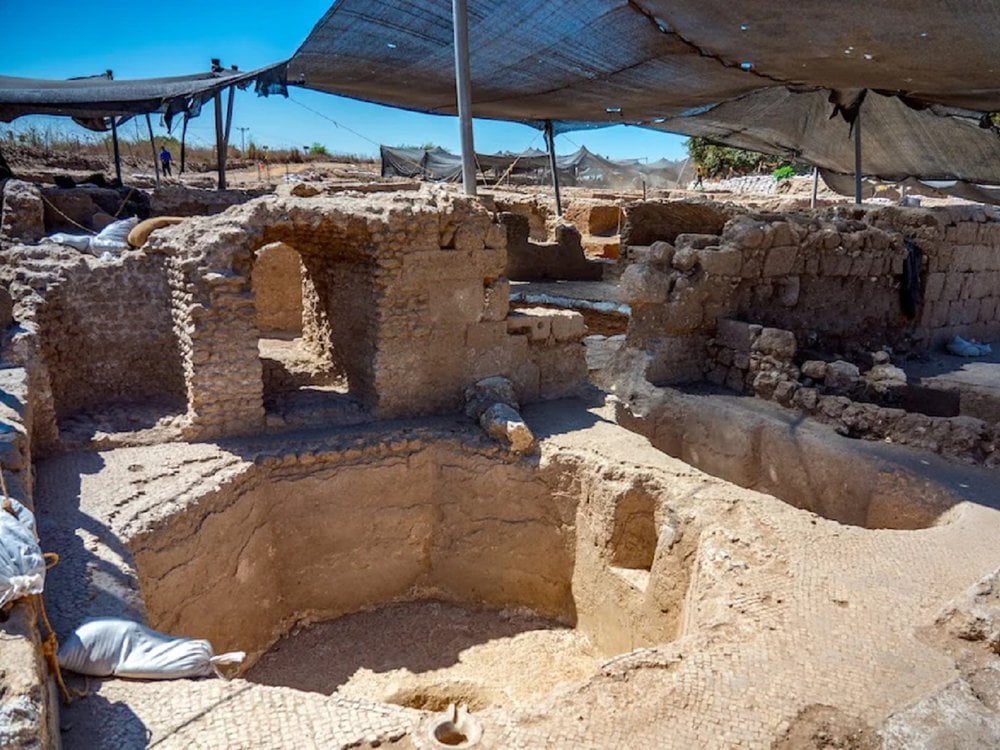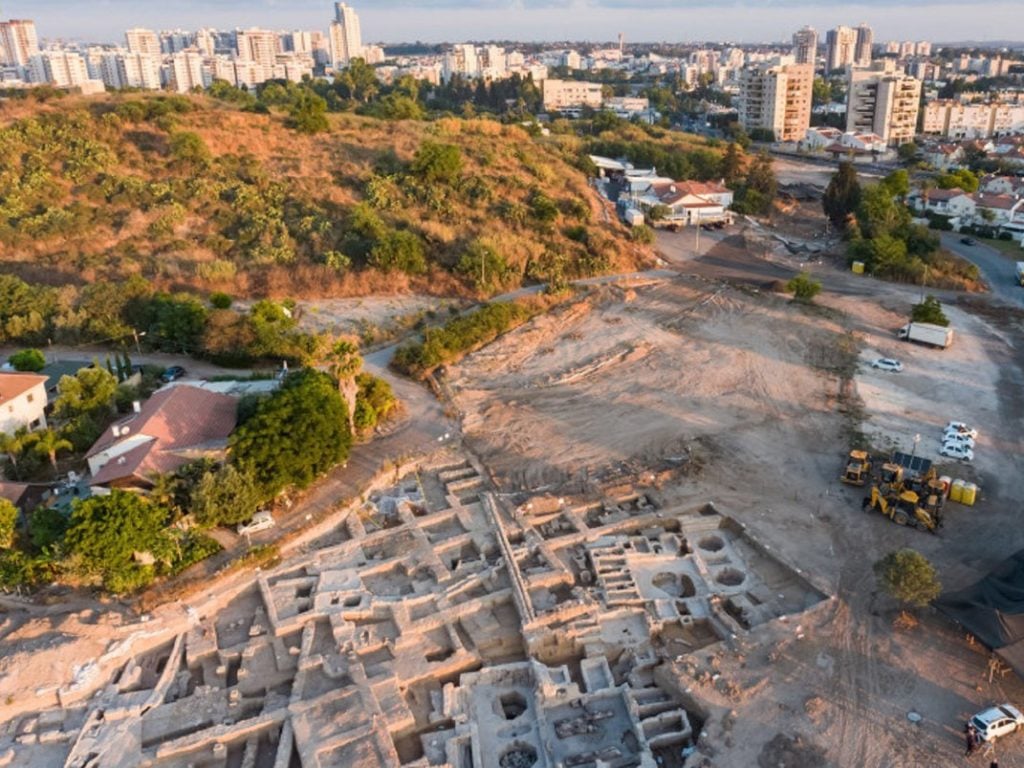
The largest wine press in the entire Byzantine world was discovered recently in central Israel. Archaeologists say that the gigantic wine factory could produce an astounding 2 million liters of wine per year.
Located in Yavneh, an area which has been inhabited since time immemorial, the enormous complex of wine presses and pottery kilns that were part of a Byzantine-era wine production facility stunned researchers, who had never before seen evidence of such industrial-scale wine production.
The wine that flowed from the white-tiled vats, which was known as “Gaza wine” after the port it used in export out of the country, was famous even as far away as Europe. Moreover, researchers say that the area functioned as a gigantic industrial complex for thousands of years back into antiquity.
Of course, the huge-scale production of the fruit of the vine appears to be counter to the admonitions that appear in the Bible against drunkenness, including this one from Isaiah 5:11 — “Woe unto them that rise up early in the morning, that they may follow strong drink; that tarry late into the night, till wine inflame them!”
However, it should come as no surprise that winemaking had such an important place in the world of that time, since potable water was so precious in ancient times. Safe, clean drinking water was not something that could be taken for granted, so wine and beer was most often used for drinking. Sometimes wine would be diluted with water as well, a practice that was common with the ancient Greeks, who considered drinking wine full-strength as barbaric.
Excavation directors Dr. Elie Haddad, Liat Nadav-Ziv and Dr. Jon Seligman, explain that everyone in the known world at the time either drank wine straight or in water, necessitating the production of large-scale winemaking facilities. It’s just that the scale of the production was beyond belief — comparable to that of any of today’s industrial-scale winemakers.

Grapes that were native to Israel — and are now sadly extinct — produced the precious commodity all over the land, from north to south, incredibly even including in the Negev Desert.
Tell Yavneh is located by a stream called the Sorek, which would have provided a reliable source of potable drinking water for the people of the area and for the wine industry that grew up there.
Prehistoric remains have been found in the area as well as the remains of buildings that date back to at least the Middle Bronze Age, including the pottery kilns that were built to create the huge vessels for the wine’s storage and export.
Other presses have also been found at Tell Yavneh which date back to the Persian period, during the fifth and fourth centuries BC.
Byzantine wine press produced mass quantities of the precious commodity
As is appropriate for such a gigantic place, the Yavneh dig of the Byzantine-era winepress is being worked by one of the largest groups of archaeologists in the country, numbering approximately 300 individuals.
For now, they are focused on excavating the buildings on the plains beneath the Tell, or hill, where most of the townspeople lived. When that area is uncovered, it will add yet another chapter to the fascinating story of this winemaking heartland of Israel.
Seligman says “We have many large winepresses in the country, but to have a complex of five large ones – as well as small ones – in the same place is unique.”
Each of the five large Byzantine-era winepresses measures an astounding 225 square meters (2,420 square feet) in area; all have perfectly circular indentations in the middle of them where screw-presses were located which were used to press the very last of the juice out of the grapes.
“These large winepresses were thoroughly planned,” Seligman explains, adding “All were symmetrical, and their features are all the same. They were built as one complex down to tone decision maker who made the decision to build a complete wine estate with streets, storerooms, winepresses and kilns to make the vessels.”
Industrial-scale wine production; pottery vessels also created on vast scale
The area nearby is littered with broken pieces of amphorae which were flawed or bore the brunt of mishandling.
“They were like a plastic bottle today,” Seligman says, adding “Any sort of crack, they didn’t bother to try to fix it but threw it away. They made tens or hundreds of thousands of these amphorae.”
Intriguingly, there are even sculpted decorations in the walls of the winepresses themselves in the form of clamshells.
After an initial period in which the best juice would be produced by the natural pressure of the great weight of the grapes, weights in the form of screw presses would be applied, allowing the vintners to squeeze out every bit of goodness they possibly could from the grapes.
Seligman explains that the “Gazan wine” was white, with ancient sources noting that it was “white as snow.” It was served at the coronation feast of the Byzantine Emperor Justin II in Constantinople in 566, according to Seligman. Incredibly, it may even be possible to get DNA from the pips, or grape seeds, that the archaeologists found at the site.
See all the latest news from Greece and the world at Greekreporter.com. Contact our newsroom to report an update or send your story, photos and videos. Follow GR on Google News and subscribe here to our daily email!



